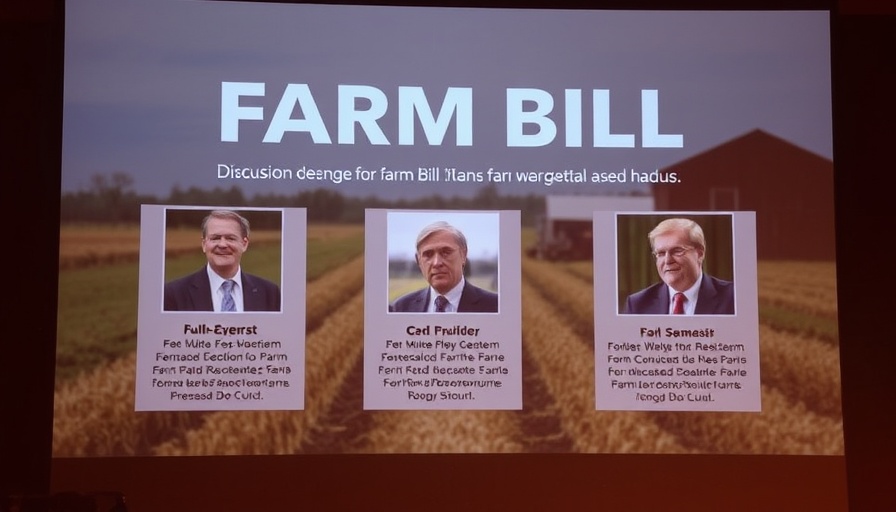
The Importance of Understanding the Farm Bill
In a world increasingly concerned with sustainability and food justice, understanding the Farm Bill is essential. This massive piece of legislation influences everything from farm subsidies to food assistance programs. Given its complex structure, many people find it challenging to grasp the intricate details that affect agriculture and environmental policy across the United States. Yet, familiarizing ourselves with the Farm Bill has become crucial for anyone involved in or interested in sustainable finance and responsible agriculture.
In The Farm Bill Explained: Foundations, Framework & Why It Matters, the discussion dives into the intricacies of the Farm Bill, exploring key insights that sparked deeper analysis on our end.
Historical Context: The Farm Bill's Evolution
The Farm Bill dates back to the 1930s and has evolved significantly over the decades. Originally designed to support farmers during the Great Depression, the Farm Bill now encompasses a diverse range of agricultural and nutritional programs. Each iteration reflects changing priorities in US agriculture and society at large, showcasing the ongoing conflict between large, industrial farms and smaller, sustainable operations. Understanding its history helps elucidate current debates around funding, conservation, and support for small farmers.
Why It Matters: The Farm Bill and Its Impact on Communities
The implications of the Farm Bill stretch beyond agricultural policy; they significantly impact local economies and food security across the nation. By funding programs like SNAP (Supplemental Nutrition Assistance Program), it acts as a vital safety net for millions of low-income families. Conversely, its focus on commodity crops often sidelines fruits and vegetables, which can lead to nutritional disparities. Analyzing these aspects of the Farm Bill provides essential insights into how agricultural policies can promote—or hinder—community sustainability.
Emerging Trends: The Shift Towards Sustainable Practices
Recently, there has been a notable shift in focus within the Farm Bill towards regenerative agriculture. Advocates are urging for more resources to be directed towards sustainable practices that enhance biodiversity and promote environmental health. This transition reflects a broader movement within impact investment circles, where funding is increasingly directed at projects that yield social and environmental benefits alongside financial returns. The inclusion of regenerative agriculture initiatives in the Farm Bill marks a significant step forward for those advocating for a more sustainable food system.
Conclusion: Engaging with Farm Bill Discussions
As the political landscape becomes more complex, understanding the Farm Bill is not just an academic exercise; it's crucial for investors, small businesses, and anyone interested in fostering a sustainable agricultural future. The conversations surrounding the Farm Bill can serve as a pulse check on the state of food and farm policy in America. If you're passionate about fostering change, consider engaging with local policy discussions and advocating for the inclusion of sustainable practices within the Farm Bill.
 Add Row
Add Row  Add
Add 




Write A Comment